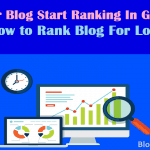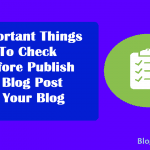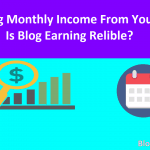Bounce rate refers to the percentage of your blog’s visitors that leave your website before clicking another page.
Depending on the nature of your blog, a high bounce rate can either be good or bad. In any case, your blog won’t thrive if you cannot convert your readers into customers.
For most websites, reducing bounce rates is a must to improve conversion rates and widen the blog’s reach.
Tracking your bounce rate can be done by viewing your WordPress dashboard (if you’re using a WordPress-powered blog) or by using Google Analytics.
By knowing which pages have high hits and bounce rates, you will learn what the issues might be and how to fix them. Here are some ways to decrease your blog’s bounce rate:
Contents In Page
Post Consistently
Companies that write posts on a regular basis are more likely to generate higher traffic. Additionally, internet marketers who blog daily are able to sell their products to more customers.
In order to keep visitors coming, you need to create a reliable content plan that will entice them to regularly view your site. One way of doing this is by putting up different formats, such as podcasts and videos.
Your audience will appreciate the variety of your content. Make sure that your social media accounts are updated because those are where most people like to engage with each other.
Update Your Content
Your posts from 10-15 years ago may still appear in search results. However, readers can quickly turn away from your site once they see the post date. They probably wouldn’t bother checking the rest of your content.
If people do find their way to your old posts, you can make them stay by updating those posts and making them relevant to the times. Link your newer post to the old post so users can see what changed.
Turn Off Autoplay on Your Videos
You may have put considerable effort on the new video you posted on your blog, and you’re certain that it will help your blog’s cause. However, people are more likely to leave your site when your homepage lambasts them with sounds that they aren’t expecting.
Let your readers decide when they’re going to play your videos instead of automatically playing it for them when they’re not ready.
Perform A/B Tests on Your Blog
A/B tests can reveal why certain pages have a high bounce rate. For example, trivial details like button color may actually have an effect on what makes a user stay on your site or not.
The lesson here is: people can quickly leave your blog if they don’t like certain aesthetics. Conducting A/B tests regularly can help you decide which “look” serves your blog the best way.
Learn the Relevant Numbers
If you ultimately want to reduce your bounce rate, it is important to know your niche’s average bounce rate. It will be hard to succeed if you don’t know the exact numbers to aim for.
As briefly said earlier, high bounce rates can be good or bad, depending on the situation. It’s bad if you don’t convert your visitor into a loyal subscriber.
However, if your visitor clicks an outbound link leading to an advertiser’s website, a high bounce rate means more income for you.
Make your content readable
The lack of readability increases the bounce rate and makes it easy for customers to leave your site quickly.
You can improve reader experience by ensuring that you make your content legible and readable.
The formatting that you use can either attract or scare away a reader. Avoid poor formatting such as using a large chunk of texts that are poorly distributed.
You should use an easy-to-read format which includes the use of headlines, subsections and bulleted points for the reader to quickly skim your content and get the main points without even going through the entire post.
You can illustrate some of the points in the form of a chart and include images to captivate the attention of readers. Quotes from experts can also add some sort of authority to your posts and increase credibility.
Use questions to try and engage the readers and stir up conversations. With such tactics, it is hard for a reader to leave your site within seconds.
Don’t annoy readers with unnecessary popups
Irrelevant popups can easily annoy most readers and increase the bounce rate for your blog.
When a reader is searching for something from your posts, they need all the concentration they can get to go through your content. Popups after every few seconds can be irritating and distracting.
Unfortunately, some of the marketers use aggressive language in popups making it hard for readers to follow their sites.
Though pop-ups can help you expand your email list, a large number can result in bad user experience and increase the bounce rate; thus try to limit their use.
Come up with a compelling CTA
It is easy to attract visitors to your site using a good headline and quality content, but if your call to action is not persuasive enough, it can increase the bounce rate.
Since you aim at converting visitors to buyers, you need a compelling call to action that can help you achieve this easily. Try to persuade your readers to click for them to see more of what you have to offer.
Changing a text on the click button can create a significant difference in your conversion rate.
It can help you engage users as you try to lead them to some of the resource pages in your site which, in turn, can lower the bounce rate.
Greats CTAs can also boost usability and make you gain loyal customers who can stay on the site.
Use the storytelling strategy well
One of the strategies that most bloggers use to bring their brand to life is storytelling.
When you start your blog post by telling your reader a story related to the product you may be promoting, you captivate their minds and draw their attention. Customers are naturally wired to react to good stories.
Most readers start with scanning a page as they look for an aspect that stands out from the rest.
A story within your blog can easily capture their attention and get them hooked to your posts, thus reducing bounce rate. You need to incorporate the art of storytelling correctly.
The secret lies in putting your customer first so that the story remains memorable to them.
There are many reasons why users would leave your blog as quickly as they found it. Maybe they didn’t find your content relevant to their needs, or your website is hard to navigate.
In any case, the above tips will still not work if you don’t focus on creating up-to-date and engaging content.
If you put your readers and customers first, your bounce rates will eventually reach a desirable number –– especially once you’ve fixed the problem areas of your site.
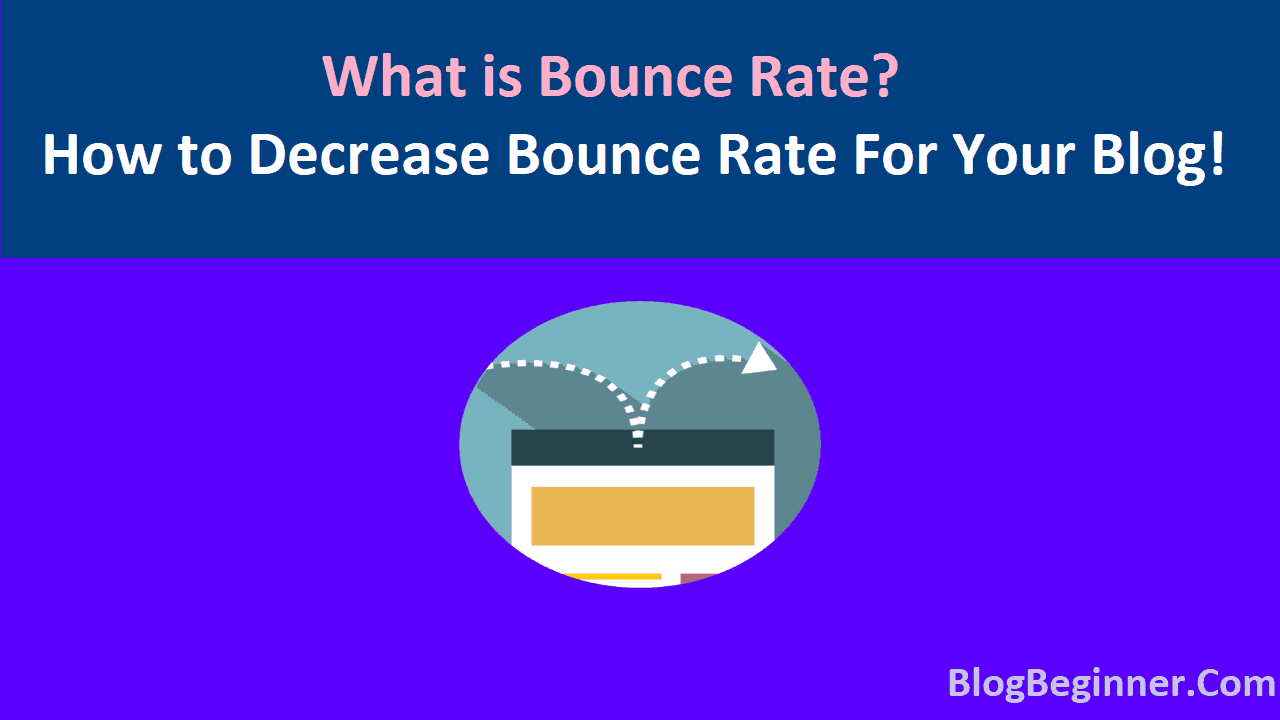
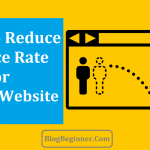
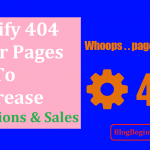

![How To Increase Google Search Crawl Rate Of Website[Tips & Methods] How To Increase Google Search Crawl Rate](https://www.blogbeginner.com/wp-content/uploads/2019/03/How-To-Increase-Google-Search-Crawl-Rate-150x150.png)
